Stone Stadium (A.K.A. "The Graveyard")
Home of South Carolina Gamecocks soccer
Opened: 1981 (current grandstand built in 1996)
Seating Capacity: 4,000 in main grandstand (5,700 total)
Location: Bordered by Heyward Street (to the south), Sumter Street (to the west), Whaley Street (to the north), and Marion Street (to the east) in Columbia, Richland County, South Carolina
Games seen in Database Era: 61 between September 2, 2008 and October 31, 2013
Latitude: 33.987779 N
Longitude: 81.024981 W
Distance from my house point-to-point (as the crow flies): 36.87 miles
Driving time from my house: 55 minutes
The current grandstand for South Carolina soccer was built in 1996 through a grant by benefactor Eugene E. Stone III. As a result, the stadium's official name is "Eugene E. Stone III Stadium", shortened to just Stone Stadium. There is only one problem with that: Furman's soccer stadium is also named after the same exact Eugene Stone. I do not want to mix up two soccer stadiums in South Carolina, so let's keep it simple and call this stadium by its nickname: The Graveyard. The stadium has had that nickname for the preceding facilities on the grounds, and serves to unite the home history of Gamecock soccer. The nickname is partially derived from that it was a graveyard for Gamecock opponents back when the program was very successful in the 1990s. But the main reason for the nickname is because the grounds of the stadium literally border the House of Peace cemetery. In the second picture from the bottom, the trees in the left hand side of the picture separates the soccer grounds from the cemetery immediately behind them. But even with those trees, you can still see some graves from your seat (the third picture from the bottom was taken looking in from just in front of the trees on the soccer stadium side). And the Gamecocks sometimes even play soccer games on Halloween at The Graveyard! How cool is that! A USC soccer game is the perfect place if you want to see a stadium on haunted grounds. The House of Peace Cemetery is a historic Jewish landmark that happens to sit on the USC campus. I remember in a state legislature hearing on Geocaching (one of my old hobbies) in discussing the legal implications of geocaching on cemetery grounds a Jewish state senator stating that Jewish tradition requires defending cemeteries from unwanted intrusions (especially at night). The gates to the cemetery are typically locked, but sometimes USC staff have to climb into the cemetery to fetch balls that go between the trees and into the cemetery. To my knowledge, they have always come back okay.
But aside from the usual jokes about playing in a literal graveyard, the southern most Stone Stadium is a decent facility for college soccer. Unlike most other USC stadiums, the Graveyard sits on the southern end of the actual main campus, fitting in with the surrounding Columbia community. It may not be an ultra modern facility like Carolina Stadium and Colonial Life Arena. But few stadiums, even at large universities, are such for soccer. The Graveyard has in addition to its unique setting a decent amount of history as well. Clint Mathis and Josh Wolff, both on the U.S. quarterfinalist team in the 2002 World Cup, have played for the Gamecocks at the Graveyard. Current Aston Villa goalkeeper Brad Guzan also briefly played for the Gamecocks here as well. And every single Gamecock soccer team dating back to the program's birth in 1978 has been coached by Mark Berson. Unfortunately, Berson's teams have not had as much success lately, aside from a 2010 Sweet 16 appearance. As the Gamecocks in men's soccer have to play in Conference USA with too few SEC teams having men's soccer, USC soccer has not been able to keep up with other sports on campus. But Gamecock soccer was once powerful and relevant in college soccer, even though they could not quite come up with a national title like the baseball team has done recently. There is still good enough reason to come watch competitive soccer here, whether it is Mark Berson's men or Shelley Smith's women.
Seating Capacity: A-
Currently USC lists the seating capacity of The Graveyard at 5,000, although it has been set at 5,700 before. I have also seen the actual listed grandstand capacity at 4,000 before, which is more realistic. Barring putting temporary seating on the east side of the field between the cemetery and the scoreboard, getting more than 5,000 fans here is a bit unrealistic. But compared to most soccer stadiums in this country, that is pretty good sized. Some schools like UC Santa Barbara or Connecticut have bigger stadiums that they fill. But the Graveyard is rarely full, although a rivalry game against Clemson has occasionally sold out. The Gamecock men when playing well can still routinely bring in 2,000, with the women bringing in about 1,000. With both teams struggling, those numbers were about half during the 2012 season. The Graveyard does not rank as one of college soccer's biggest stadiums, but it is still more than big enough for the teams it serves.
Quality of Seats: C+
USC has imported seats from the nearby defunct baseball stadium in Sarge Frye Field. A little over half the stadium is now red chairback seats, which for most games provides enough comfortable seating. The grandstand is steeply pitched, and all seats have a great view of the game. The red seats are not that modern though, and are a bit worn from their use at Sarge Frye Field. The Graveyard is a pleasant place to be for a night game during September or an afternoon game in October. But for those Sunday afternoon games in September, the stadium can suffer from the brutal heat. You can find some shade underneath the press box, but at about 1 PM there is absolutely no shade to be found. For the occasional noon and 11 AM game, shade can be found by standing underneath the trees lining the cemetery. The only problem with that spot (and with most standing room on the east side of the stadium) is that their is limited visibility of the scoreboard.
Attractiveness/Uniqueness: B+
As mentioned frequently, just beyond the northeast corner of the stadium is an actual cemetery! How much more unique can you get than a ground where soccer balls can land between tombstones? Newberry College's football stadium also has a cemetery dominate the view from behind the north end zone, but that cemetery is well across the stadium and not directly connected to the ground itself. While I love trees as much as anyone, part of me wishes that those trees were not up so as to give the Graveyard a more haunted feel.
Outside of the cemetery's uniqueness, the stadium is not particularly attractive although it fares better than some of its USC counterparts. The main grandstand is kind of bland and ugly, with not much behind it as the railroad district of Assembly Street makes for a bland view looking towards the west. Looking out past the cemetery is a fieldhouse used for a few Gamecock teams for indoor training. Looking out towards the north is the USC-operated Cliff Apartments, and to the south is the new Dodie Anderson Enrichment Center that serves as the academic facility for USC student-athletes. The surrounding streets of Whaley and Heyward are fairly well landscaped, and gives the stadium a campus feel that the other Gamecock athletic facilites do not have.
Concessions: D+
The concessions stand at Stone Stadium/Graveyard is a bit lacking in selection. Most games you have only hot dogs, nachos, and candy as the only food items available. Some games when the grill is going you can get hamburgers as well. And like at the other USC stadiums, you only have a limited selection of Coke products to drink. The food itself is pretty decent among what is available, and normally you cannot expect more from a college soccer venue. But USC still charges the same prices for these food items as it does at their other venues, even for games with triple digit attendance numbers some of the time. A plain hot dog and Coke might not be too bad, except when it costs over $6 total. Every thing else at the Graveyard is a better bargain compared to other USC sports, but not at the concession stand.
Parking: B-
There is always plenty of free parking near The Graveyard, which is definitely not true at the Big 3 USC stadiums. But where you can park varies from game to game. Usually there is plenty of street-side parking to the south on Heyward Street, but during the work day those spaces are reserved for USC contractors. Depending on the level of activity on campus, those spaces might be in demand as well. You can also sometimes park at the Cliff Street Apartment on Whaley Street although that is normally reserved for graduate students (which suited me fine as a graduate student for a few years at USC). The designated parking for the stadium is at a new parking garage down Heyward Street from the Dodie Anderson Center, although that is not as easy in and out as the other spaces. And for highly attended games, no space is easy in and out (still beats parking elsewhere in Columbia though).
Lighting: C
The stadium is a bit dim in some areas, not as well lit as Carolina Stadium or Williams-Brice. Of course it is just used for soccer, which occasionally only needs television lighting. And the lighting is ample enough, but not good enough to take decent pictures at night without a professional camera. Still, it is serviceable enough for a college soccer stadium.
Fans: B+
Fans of Gamecock men's soccer is a much smaller group than what other USC sports get, but just as loyal. If you go to enough games here, you will get to know all of these loyal supporters. There is "Sargent Sue", a former Sargent at Fort Jackson who is also a passionate and knowledgeable soccer fan. Speaking of geocaching and cemeteries as mentioned earlier, she placed a cache in the parking lot off Marion Street just outside the cemetery before it got removed during construction. There is also one thirty-something guy in a bucket hat who always enthusiastically (but in a quite voice) repeats back what the PA announcer says (particularly when he is reading the score). Well-known local meteorologist Jim Gandy is also known to appear at Gamecock soccer games as well. You also get a few students who can get raucous (and once tried to bring in a vuvuzela which is banned by the NCAA) while the others just casually hang out. The only knock is that the crowds for women's games is much weaker. Not as much in quantity, although as you would expect the men draw slightly bigger crowds. But the quality of the crowd is down for women's games as well, dominated by soccer families with children who are not always interested in the game. But generally crowds here are not too bad, even though it is not at the level of a professional club here.
Other stuff: C+
USC has made upgrades to Stone Stadium quite a bit in recent years. The scoreboard at the southeast corner is very nice and modern with a video board. The field has been sunk deeper into the ground in recent years, with a concrete elevated path around it. The PA announcer is very good, and tries to integrate English football terminology into the game which is a nice touch considering that NCAA soccer rules stray too far away in my opinion from FIFA's Laws of the Game. The Graveyard manages to be professionally managed without being overbearingly so like at the other Gamecock stadiums. But for all of USC's efforts, Stone Stadium feels like an old and outdated structure even though the main facilities date back only 17 years. It feels a bit too much at times like a high school football stadium, although that is not too uncommon among major conference college soccer facilities. Perhaps the biggest problem is the poor access between the east entrance and standing room areas and the main grandstand on the west side of the stadium. You can walk on the field itself behind the goal on the south end of the stadium when the game is not going on, although for the early portion of the 2012 season that way was shut off (most likely due to concerns of having fans on the field even during warmups, even though non-D1 stadiums usually have little problem with it). You can also walk on the sidewalk on the north end of the stadium, although that appears to be discouraged and you have to step over a guard rail at one end to do so. The entire ground needs to be better connected and feel more like one true stadium.
Summary: The Graveyard has a few flaws, like most stadiums do. But these are relatively minor, and there are more benefits to attending a USC soccer game. It might not always succeed in being fan friendly, with the limited access to seating and a lack of shade during early season afternoon games. But too many stadiums try to force their way into being fan friendly. The Graveyard just happens to be what it is. And that is a good enough college soccer venue in a unique setting. South Carolina soccer is not where it once was when Berson was a younger coach. And as a result, you can probably find better soccer atmospheres elsewhere. But for this being the Deep South, USC does a good job for hosting soccer during the middle of football season. It is a better environment than most for college soccer in the region, and has one of the coolest and most appropriate nicknames among all stadiums in the country. And yet South Carolina soccer is not often mentioned when discussing affordable entertainment options in the Columbia area. If you want to see sports during the fall in the Midlands, then Stone Stadium/the Graveyard is the place to be if you do not like football or find games at Williams-Brice Stadium. After all, to most sports fans in the world this is true football.
Overall GPA: 2.6125

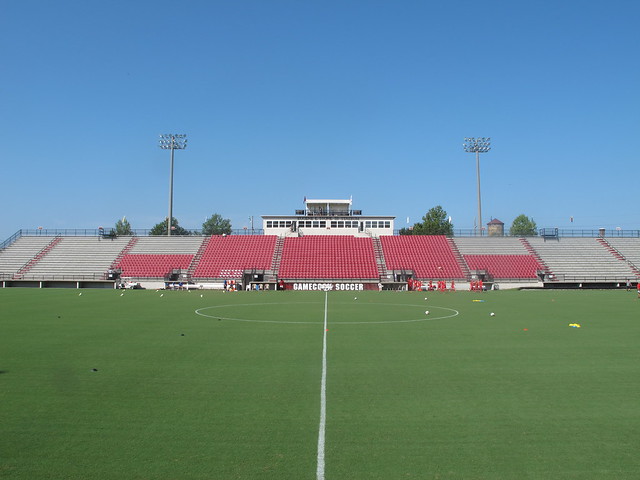
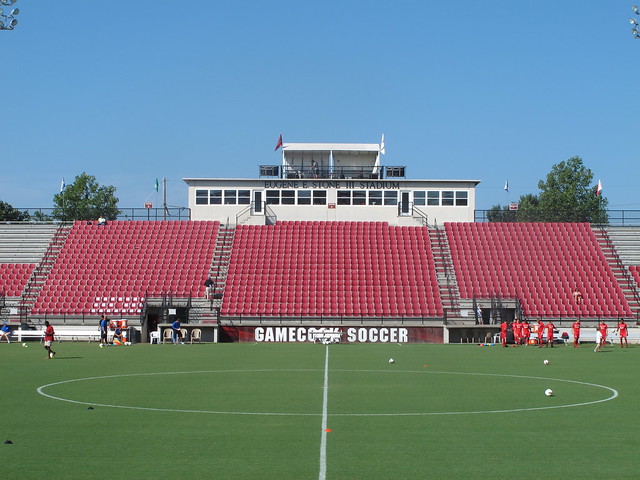
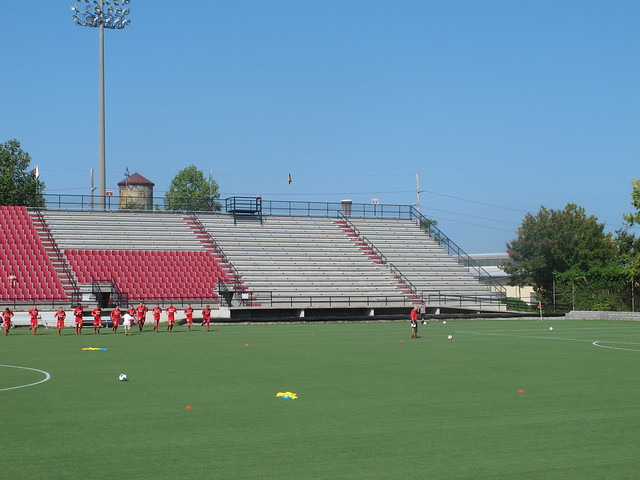
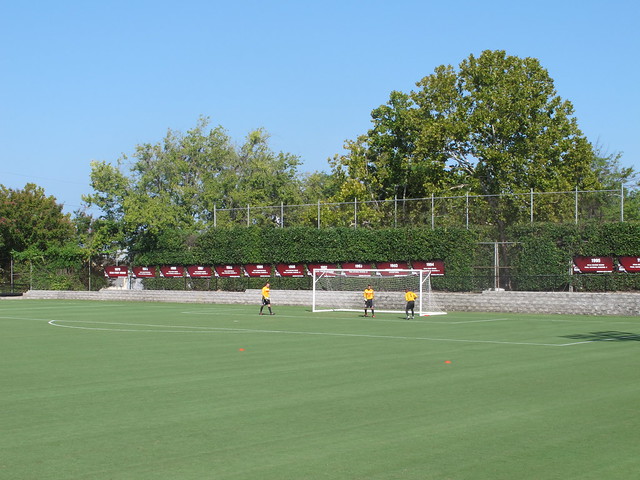

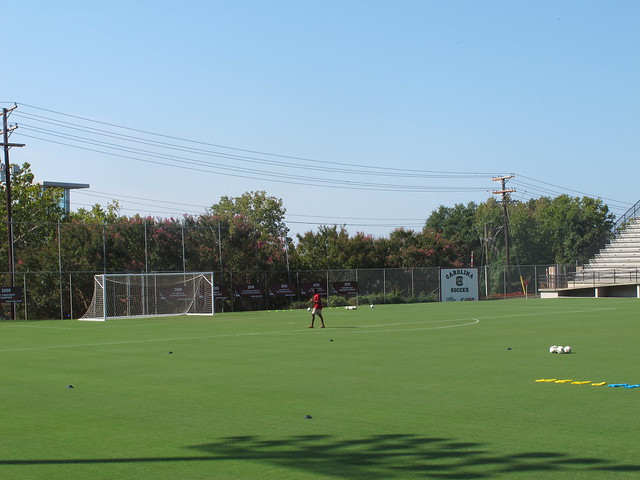
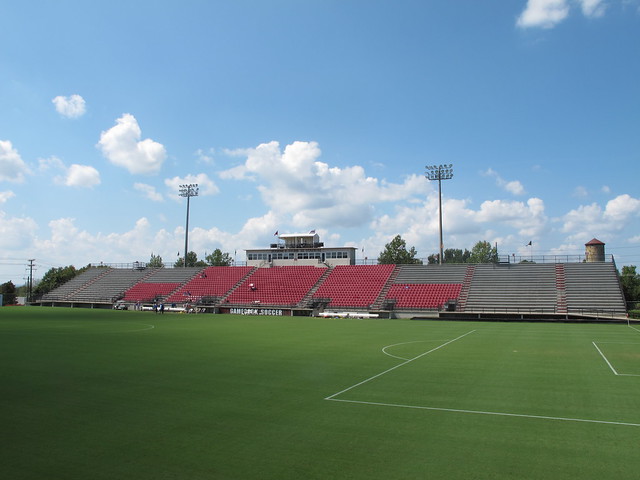
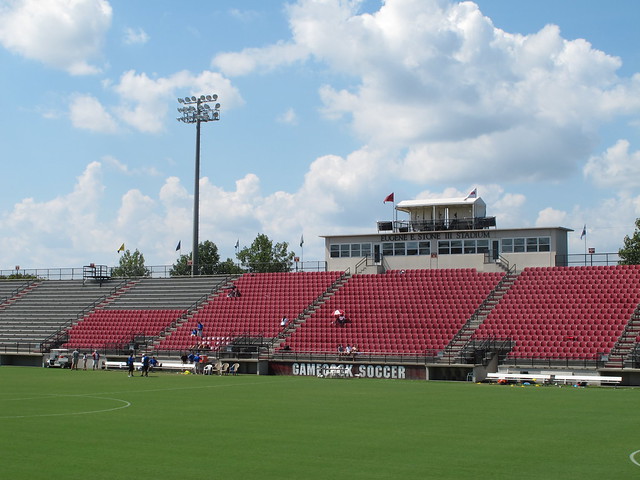
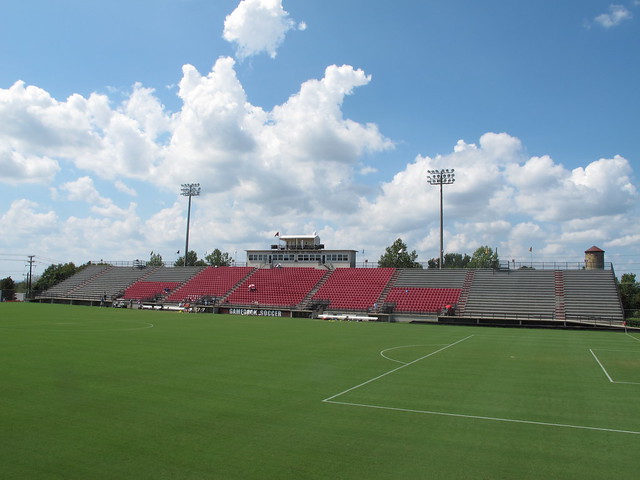
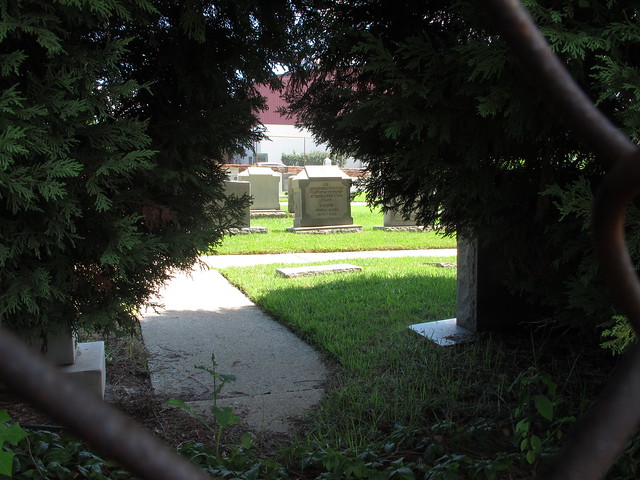
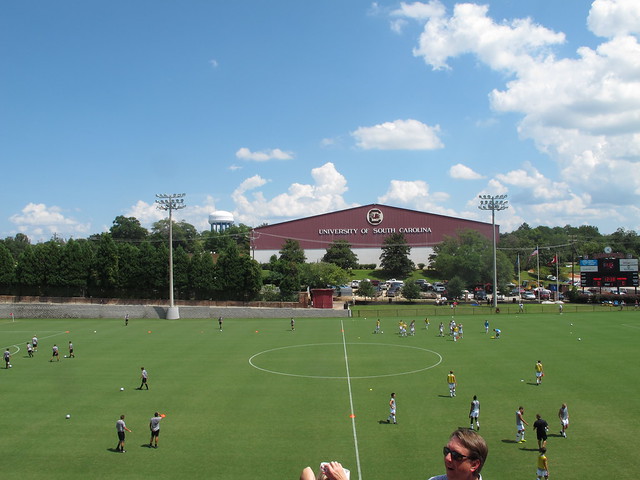
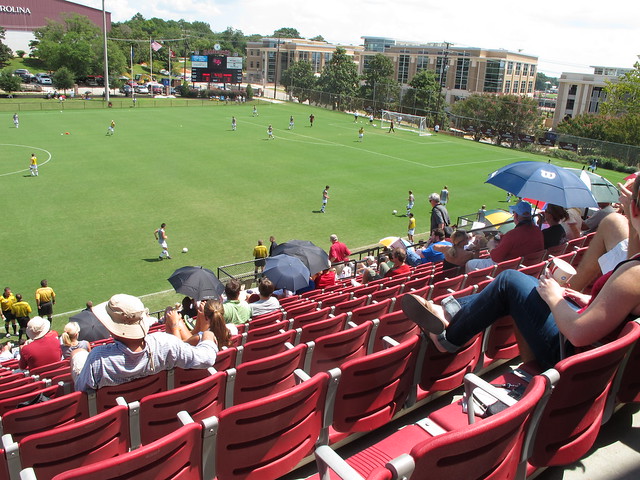
No comments:
Post a Comment